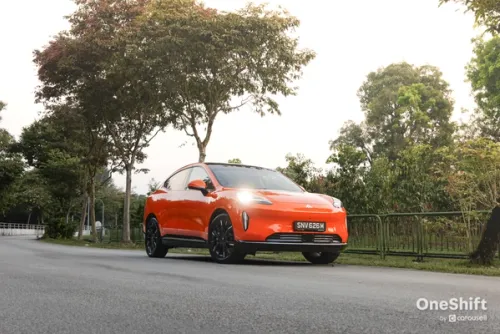New 4-cylinder diesel from Mercedes
New generation of four-cylinder diesel engines from Mercedes-Benz leads the way: Taking performance, consumption and emissions into a new dimension


What better way to mark the 150th anniversary of Rudolf Diesel's birth than a brand new generation of four-cylinder diesel engines from Mercedes-Benz which outstrip all previous benchmarks for performance, torque, emission properties and, most notably, fuel economy in their segment?
In its most powerful variant(OM 651), the new four-cylinder unit musters up 150 kW/204 hp from its 2143 cubic centimetres, meaning that it delivers around 20 per cent more power than the engine it replaces. At the same time, peak torque has risen from 400 Nm to 500 Nm, equating to an increase of 25 per cent. Despite the 25 kW increase in output, the new four-cylinder diesel burns substantially less fuel than its predecessor, which was itself highly economical. As a consequence, CO2 emissions are reduced by as much as 13 per cent and the new four-cylinder diesel unit already complies with the future EU5 emissions standard.
The new four-cylinder diesel generation from Mercedes-Benz can be briefly summed up as follows: greater power, greater economy, greater cleanliness. The new power unit from the Untertürkheim plant needs to be explained at greater length to be fully appreciated, however. It really does charter territory from which diesel engines - and four-cylinder units particularly so - have previously been excluded. It redefines standards for power output and torque on the one hand and for fuel consumption and exhaust emissions on the other, setting benchmark figures which no other comparable series-production engine is able to match at the current time.
The technical advance which the design engineers at Mercedes-Benz have achieved with this new four-cylinder diesel is not only evident on paper, its effects can also be experienced to an intense degree behind the wheel. As far as the figures are concerned, the most powerful variant of the new diesel engine extracts 150 kW/204 hp from its displacement of 2143 cubic centimetres. This represents an increase of some 20 per cent compared to its predecessor, despite the displacement being almost identical. Meanwhile, the engine's peak torque has been upped by 25 per cent from 400 Nm to 500 Nm. The power-to-displacement and torque-to-displacement ratios of the new engine from Untertürkheim make just as impressive reading, with figures of 70 kW/95.2 hp and 233.3 Nm per litre respectively (the figures for its predecessor by comparison: 58.2 kW/79.2 hp and 186.2 Nm per litre of displacement).
The engineers also took care to ensure the new diesel engine is a paragon of fuel efficiency. In spite of the substantial power boost of 25 kW, the engine makes even more frugal use of diesel than its predecessor, which was itself a most modest consumer of fuel. This is immediately apparent from the fuel consumption figures for the C-Class, in which the powerpack will be making its debut in the autumn. When fitted in the C-Class, the new 150-kW unit burns just 5.4 litres of diesel per 100 kilometres (NEDC), 0.5 litres less than previously. And when powered by the 125-kW/170-hp variant that is also newly available, the C Class returns even lower fuel figures of 5.1 litres for every 100 kilometres (a drop of 0.8 litres). As a consequence, CO2 emissions are reduced by 8 and 13 per cent respectively to 143 and 136 g/km. The Mercedes-Benz engineers have also succeeded in further reducing the amount of untreated engine emissions. Even without an active denoxification process, the new four-cylinder diesel already meets the future EU5 emissions standard.
"This takes our new four-cylinder unit into a realm which has so far been the preserve of three-litre six-cylinder diesel or large V8 petrol engines - all combined with exemplary fuel economy," commented Dr. Thomas Weber, who is responsible for Group Research and Development at Mercedes-Benz Cars on the Daimler AG Board of Management.
Drivers are able to savour the advances that have been made with all of their senses. The new drive unit has a powerful feel to it, its response is agile, it delights with its tremendous pulling power and impresses with admirable levels of smoothness for a four-cylinder engine. It enables sports-car-like performance, propelling the C-Class Saloon from standstill to the 100-km/h mark in a mere 7.7 seconds. The engine's supreme flexibility permits quick turns of speed for rapid overtaking on country roads, taking just 9.4 seconds to pick up from 60 to 120 km/h. This all adds up to a high degree of fun at the wheel combined with great economy.
Quite apart from its outstanding power output data, the new drive unit also boasts markedly superior torque build-up from low revs compared to the engine it replaces, along with a class-beating torque characteristic curve. This means that the engine can be run extremely economically at low rev speeds in routine driving situations.
The new diesel engine is set to supersede four different powerplants in all, and will be fitted in a number of variants across a wide range of model series, even including the Mercedes-Benz Sprinter. Thanks its high power potential it has been possible to apply the downsizing principle, where smaller engines with fewer cylinders are used in order to lower fuel consumption very effectively. Thanks to the agility, pulling power and optimum running characteristics of the new diesel drive unit, the vehicles it is fitted in will continue to be able to live up to the high standards of comfort and motoring pleasure expected of models from Mercedes-Benz.
[IMG]http://www.oneshift.com/showroom/uploadimages/resized-20080410224320134.jpg[/IMG]
Credits: Jarvis


Get the Best Price for your used car
from 500+ dealers in 24 hours

- Convenient and Hassle-Free
- Consumer Protection
Transparent Process
With No Obligation








